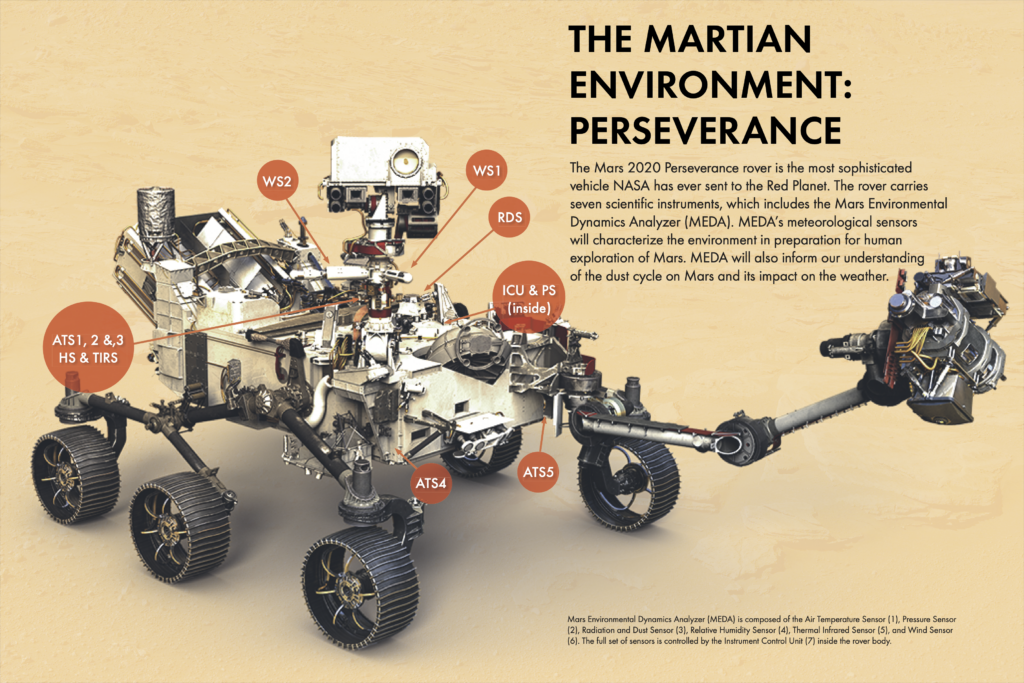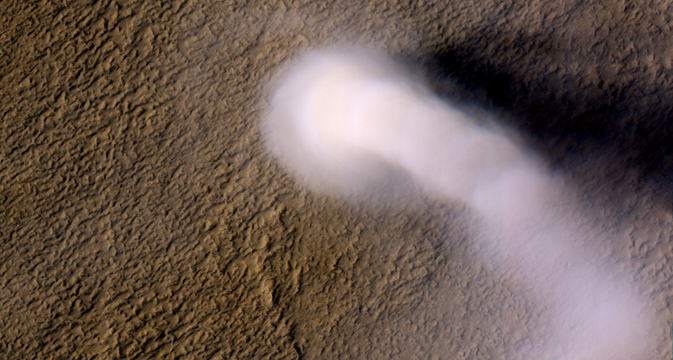This post was written by Carolyn Wang, a first-year undergraduate at the University of California, Los Angeles (UCLA). Though she is studying Public Affairs and Statistics, she has always been fascinated by astronomy and the possibility of extraterrestrial life! In Carolyn’s free time, she enjoys reading, going on hikes, and taking dance and yoga classes.

Author: Brian Jackson
Author’s Institution: Department of Physics, Boise State University
Status: open access on the Planetary Science Journal
Mars, dubbed the Red Planet with its fiery glow, has always fascinated us. Being one of our closest companions and having a relatively high possibility of housing life, Mars is among the most explored extraterrestrial landscapes in our solar system. Along with its beautiful red colors, another key Martian characteristic is its dust storms which, at their worst, can envelop the whole planet (yes, all of it!) in darkness.
Though no humans have stepped foot on the Red Planet, we have sent rovers to explore the planet’s surface from a safe distance. Among these rovers is Perseverance, which landed in Jezero Crater in 2021. Perseverance had the Mars Environmental Dynamic Analyzer (MEDA) on board, an exploratory instrument providing insight about Mars’ signature dust devils.
What are dust devils?
Dust devils, also known as dusty vortices, are key to understanding Mars’ climate since they loft dust into the atmosphere, shaping the Martian environment. Dust devils are exactly what they sound like–a wild swirl of dust particles amidst rapid wind speeds. Some even reach 30 kilometers high! Because of their important role in influencing the Martian atmosphere and climate, many scientists are studying dust devil encounters.

MEDA, a technology developed by NASA on board the Perseverance rover, measures factors like air pressure, temperature, and wind speed. The findings from MEDA gave scientists a window into the behavior of dust devils near Jezero Crater. The author of this paper combined data from past studies and new information from MEDA to calculate the number of dust devil encounters. They found that encounters peaked midday with an average of 5 encounters every Martian day, or “sol”, with variation from sol to sol.
To be (dusty) or not to be?
This study also used MEDA data to evaluate whether a wind vortex was dusty or dustless, allowing the author to figure out how many of the encounters were true dust devils. This was new insight, since dust and dustless vortices operate on the same principles of physics, making it really tricky to distinguish between the two. However, new information from MEDA that measured solar insolation and dust optical density allowed us to identify passing vortices as dusty or dustless. From analyzing this data, only about 25% had dust at a detectable level. So, many of what appeared as “dust devils” at first glance were really dustless devils in disguise.
How does Perseverance compare?
So, how does the data from MEDA stack up when set side by side with data from other sites of Mars?
Well, vortex encounters for Perseverance exceeded the amount of vortices at Curiosity, a rover exploring Gale Crater on Mars, by a factor of 5-10. The results were less conclusive when comparing Perseverance to InSight, a Martian lander taking daily weather measurements. This was because Insight has discrepancies in the analysis of its data on vortex encounters when looking between studies. However, it seems like Perseverance’s vortex incidents were also higher than InSight in general. The data strongly suggests that vortex activity at Jezero Crater, the site of Perseverance, is more active than at other landing sites, demonstrating differences in dust vortex activity across the Red Planet.
Dust devils and the future of Martian exploration

This work is significant because dust devils mold Mars’s climate, shaping the atmospheric temperature, the atmosphere’s ability to hold water vapor, and more. Understanding how dust vortices will form and how frequently they occur in turn allows us to make predictions about Mars’ environment. Dust vortices give us a glimpse into Martian climate, which can tell us more about the possibilities of life on the Red Planet.
Examining dust storm behavior also provides valuable information for us as we continue our exploration missions and work towards sending a manned expedition to Mars. Because dust devils so greatly influence the conditions of Mars, we must truly understand them in order to safely explore the Red Planet and unlock the secrets hidden under the dust.
Astrobite edited by Ali Crisp
Featured image credit: NASA/JPL-Caltech





Why do some vortices have dust and others don’t? Why is there a significant difference in the kind of information they provide?
My guess is that a dustless vortex occurs high enough in the atmosphere so that the surface, where dust originates, does not experience much pressure and gas velocity disturbance. But in both cases, aren’t the basic physics that powers both events the same? And if so, what information does one have that the other doesn’t? Thanks.